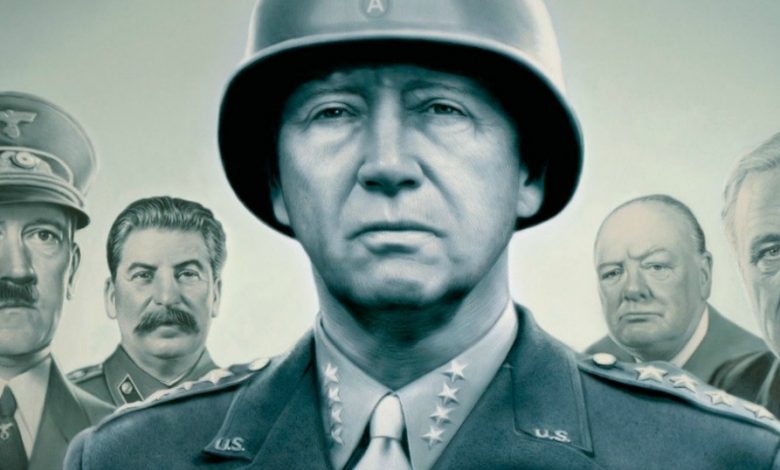Bill O’Reilly’s ‘Killing Patton’ Peddles Warmed Over Facts

“Killing Patton: The Strange Death of World War II’s Most Audacious General” landed in bookstores in late September and instantly climbed to the top of the bestseller lists. No doubt O’Reilly fans will gobble up the latest addition to the hugely popular “Killing” series. Readers will be disappointed to discover that O’Reilly—and sidekick Martin Dugard—fail to deliver the goods.
In the pre-release hype, O’Reilly promised to reveal the mystery of who was behind a sinister plot to assassinate the irascible general. Instead, he rehashes—albeit in clever fashion—decades-old conspiracy theories. Readers also looking for the story of how Patton was killed won’t get the answers in this book, either.
Written in a paperback-at-airport style, “Killing Patton” is a compelling read with mass audience appeal. Its arrival coincides with dramatic geopolitical events that have sparked a renewed interest in WWII and Cold War history.
Yet O’Reilly—the former history teacher—is surprisingly short on scholarly content. The depth of the book’s narrative does not reflect the claimed depth of research cryptically listed at the back of the book. There are no footnotes, studious annotations or illuminated bibliography. Instead of new insights and analysis, the book is, at best, a collection of known information, cleverly organized, but missing basic facts and important nuances.
Early in the narrative, for example, O’Reilly claims that the Germans could not match Patton. In fact, Patton was the only Allied general who could match the German leadership. The Nazis had a dozen generals of Patton’s stature. The book also claims that Patton, in his controversial Knutsford speech days before the Allied invasion of Normandy, purposely left out the Russians in his analysis of postwar world order.
Yet O’Reilly—the former history teacher—is surprisingly short on scholarly content.
Yet careful research makes clear that Patton actually did mention the Russians; it was the reporters who left out this important detail so as to get Patton in trouble. And in the retelling of the events leading up to the fateful accident in Mannheim, Germany, O’Reilly and Dugard assert that it was Patton who organized the pheasant hunting trip that day when, in fact, it was General Gay. A small detail, but crucial to the telling of the story and the credibility of O’Reilly’s argument.
Other details are astutely placed. O’Reilly and Dugard know how to throw raw meat to “the base” with quotes like, “He [Stalin] does not celebrate Christmas. This religious holiday has no place in the godless Communist Soviet Union.” But for the actual facts of conspiracy, “Killing Patton” relies heavily on the theories and conclusions of an early book, “Target Patton: The Plot to Assassinate General George S. Patton” by military historian Robert Wilcox.
O’Reilly and Dugard also rely heavily on the testimony of self-confessed Patton assassin, Douglas Bazata. The man claimed to have operated under the orders of General “Wild Bill” Donovan, then head of the Office of Strategic Services (OSS), the forerunner of the CIA.
Conspiratorial Questions Unanswered
At times, the “Killing Patton” account is careless, disregarding the ironies of the conspiracy story. For instance, for the assassination plot to work as described, it would have required carefully timed (overnight) and orchestrated movements by several conspirators.
“Killing Patton” casually states but overlooks some critical facts: In order for a shot to be fired, a window would have needed to be propped open in advance to avoid shattered glass. Also, Patton moved himself from the front seat to the back seat of his staff car so that his frigid hunting dog would be closer to the heater. This last minute adjustment by Patton would have thrown off the plot entirely.
“Killing Patton” is a clever retelling of the Patton story, but it reads more like fiction loosely based on fact. It builds nicely, but in the end there is no real pay off—the story just ends, with an afterthought that perhaps someone should investigate the circumstances surrounding Patton’s death.
O’Reilly has missed the opportunity to explore the truly intriguing aspect of the story: Patton’s growing mistrust of the Russians in light of German de-Nazification, and the mood of the Russians on the brink of the Cold War. Beyond any conspiracies, Patton’s clarity about Russian intentions was nothing short of prophetic.
It is in this detail that the mysteries of Patton’s untimely death may be revealed.
* * *
Robert Orlando is a writer/director and the driving force behind the documentary “Silence Patton: First Victim of the Cold War.”

The best way to avoid publicizing a terrible book by a terrible writer is to ignore it.
Thanks for the interesting review. I don’t know much about Patton and his death but this review gives me a few good tidbits. And, frankly, I’m not surprised to hear the kind of errors and such that O’Reilly and his co-author make. He has never appeared to me to be a clear and consistent thinker, though certainly IS a good showman.
It would appear that O’Reilly is following in the footsteps of “guerrilla” film maker Ollie Stone’s “JFK”. Just with infinitely less present day political impact.